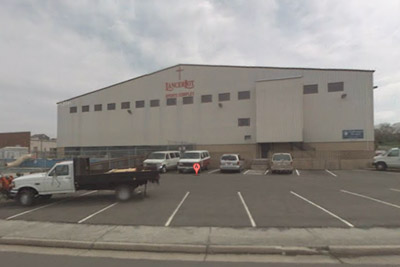Yesterday, I'd intended to write about Marian Hossa. I don't know anything about hockey, but I am interested in sports, violence, and head injuries, so when I got an e-mail about Hossa's injury I figured I'd take up the subject. But that night I'd also gotten dinged on Twitter for writing about the feckless Cubs ten games into the season when the Blackhawks were not just in the playoffs, but in the midst of a tremendously exciting run of games. I pled ignorance. I've seen more jai alai matches than hockey games, and it would have been all pretense.
The simple reason is that I grew up in the South, well before the advent of the Carolina Hurricanes, the (now defunct) Atlanta Thrashers, and the Nashville Predators. Hockey-Reference lists four players born in my home state of Virginia, and two born in North Carolina, where I was born. All six grew up above the Mason-Dixon. It doesn't list any players from West Virginia or Tennessee, ever.
We did have hockey where I grew up, though in the limited form of the Roanoke Valley Rebels of the East Coast Hockey League (now, like KFC, the post-acronym ECHL). The league's teams read like jokes rejected from Slap Shot: the Atlantic City Boardwalk Bullies; the Jacksonville Lizard Kings; the Florida Everblades; and the Macon Whoopee, among others. My local team went through four name changes, three ownership changes, and a relocation in five years: the Virginia Lancers, the Roanoke Valley Rebels, the Roanoke Valley Rampage, and the Roanoke Express.
The relocation occurred after their arena collapsed during a blizzard. It was designed to simulate hockey weather, not survive it.
Until it was destroyed, the Rebels played in the LancerLot, an obvious pun on Lancelot that stuck the team's home with the less-than-encouraging appelation "lot." Not that "lot" undersold their venue:

The lot out front is still the most attractive part.
All in all, the team was about as stable an enterprise as the much more popular monster-truck rallies and demolition derbies. But those had the family-friendly violence market cornered, so the Roanoke Valley Rebels were dependent on the rowdies. Who, to put it politely, were a thriving demographic in Vinton, Virginia. Its one claim to fame: it's the birthplace of David Huddleston, who played Jeffery Lebowski and was the manager of Hee Haw host Roy Clark. The first historical fact listed on the town's Wikipedia page is the collapse of the LancerLot. There wasn't much going on in Vinton but drink and watch people fight, and at least hockey guaranteed the latter.
In that sense, it was exactly like Slap Shot, except more Southern gothic. The Rebels' uniforms looked like this (via UniWatch):
.jpg)
That's actually from the Rebels' 1970s predecessors, as you can probably tell from the laces at the neck. Paul Lukas, Uniwatch maestro, comments: "I think it’s safe to say that logo would never get off the drawing board today." Today, probably not; in the early 1990s, like so many other things in the South, they were prime for a comeback.
Throwback jerseys aren't dead and buried; in the South, they're not even throwbacks. Perhaps someday they'll rise again, and they can play a friendly with the Columbus Blue Jackets.
Or not. The Rebels were about as competitive as their namesakes. Despite being coached by Claude Nöel, now at the helm of the Winnepeg Jets, the Rebels finished 26-31-7 in 1990-91, and missed the playoffs. Nöel left, and the team got even worse, finishing 21-36-7, somehow making the playoffs. Then they were sold for $250,000, renamed the Rampage, given a hastily conceived logo, and set ECHL records for fewest wins, lowest winning percentage, fewest points, consecutive road losses, and most road losses, "all records that are still standing."
They averaged six goals against that season, all the more reason for fans to get drunk and cheer for fights. After suffering through the worst season in ECHL history, the LancerLot collapsed over the course of two days, first chasing the fans out of the arena during a game, then taking all the team's possesions with it:
On Saturday, in the middle of the Rampage's home game against Richmond, the roof of the LancerLot arena caved in. On his way home, [coach Steve] Gatzos had to abandon his car in a snowdrift, where it still sits buried.
The rest of the building collapsed Sunday, burying the team's equipment.
"We went through the rubble the other day and got some skates,'' Gatzos said. "Reaching through the holes in the walls. It was like walking through a war zone.''
On Tuesday, the Rampage looked like refugees from a hockey surplus store. All equipment was supplied by the Admirals. Jerseys – red and black with no logos – and socks were supplied by a local recreation league team. Also, two players – Ed Dearborn and Dave Silver – were supplied by a rec league team in Virginia Beach, adding warm bodies to a Rampage roster that previously consisted of nine skaters.
Gatzos told the Daily Press: "From the start of the season, we've been in limbo, and now we can say we made it to the end." Feeling that valour and devotion could accomplish nothing that could compensate for the loss that must have attended the continuance of the contests, the Rampage moved to Huntsville. (They were replaced by a team from Roanoke, the Star City of the South, taking its name from the city's railroad heritage, a legacy of Reconstruction. The Express stuck it out a decade, even playing host to the mellifluously named Daniel Berthiahume and Dave Gagnon, but folded in 2004. Sic transit gloria.)
Those are my memories of hockey: A failed team, playing under the banner of a failed rebellion in front of something very much like social collapse. Until the roof literally caved in. I don't hate the sport; I just don't have much of a heritage to be proud of.



